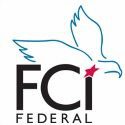
How do you get good value from the wine you buy? It’s a natural question that many people have asked me. It’s also a very subjective question with no hard and fast answer. That said, the popularity of wine continues to increase, and so does the number of choices available to consumers.
So despite the challenges involved, there will always be effort to empirically measure the value of wine. In wine circles the term for this debate is Quality to Price Ratio (QPR). At a basic level, you can obtain a QPR rating on a wine by simply dividing it’s average price by the average price of wine like it, by varietal and quality level.
This requires a good bit of existing knowledge and isn’t very helpful for the typical consumer. And what about comparing wines that aren’t the same grape, region or ranking?
Robert Dwyer of the Wellesley Wine Press is a wine blogger I respect and follow. He has expanded on the QPR equation, calling it the wwpQPR. He uses the 100 point scale from the Wine Spectator, and factors into the equation the fact that points above the number 90 are harder to obtain, and worth more, than points below.
Without this addition, a wine with a ranking of 87 at $11 would always score better than a wine ranked 93 at $17. Most wine fans would agree they’d prefer the second bottle. So Dwyer builds in an assumption that for every three points above 90, quality doubles. For every three points below 90, quality is cut in half.
You can also adjust the baseline assumption to suit your budget and taste. For demonstration purposes, Dwyer sets the baseline assumption at a 90 point ranked wine at $20 – right in line with my philosophy in general for wine buying. That baseline wine would equal a QPR of 1.0.
Click here if you’d like to plug in some of your favorites into his QPR Tool.
A lot of people would like to enjoy wine with dinner more frequently, but are turned off by high price markups. Here’s a value tip that may sound counter-intuitive – spend more on the bottle.
Why is that a way to better value? It’s because restaurants have a lot more leeway in marking up inexpensive bottles of wine, as compared to more expensive. It’s easy to markup the $12 wholesale wine three times on the wine list, but most restaurants have a hard time doing that with a wine that cost them $30. A $90 wine won’t sell high numbers in most places, so that wine will more probably be priced around $60 or $65, and be a better value.
Those are two suggestions you can put to use to measure wine value. In the end of course, value comes from the same source as wine enjoyment – your individual palate. As you learn what you like, you’ll come to know how best to purchase it at a fair price. To liberally paraphrase the slogan of a now defunct local business, an educated consumer is the best wine buyer.
____________________________________________________________________________________________________________________________
Christopher Parente is managing director and partner of Strategic Communications Group, a social media and public relations consultancy based in Silver Spring, Maryland and Tysons Corner, Virginia. He also publishes Work, Wine and Wheels, a top 100K web site in the United States as measured by Alexa, an online measurement company. You can follow Chris on LinkedIn or Twitter.


